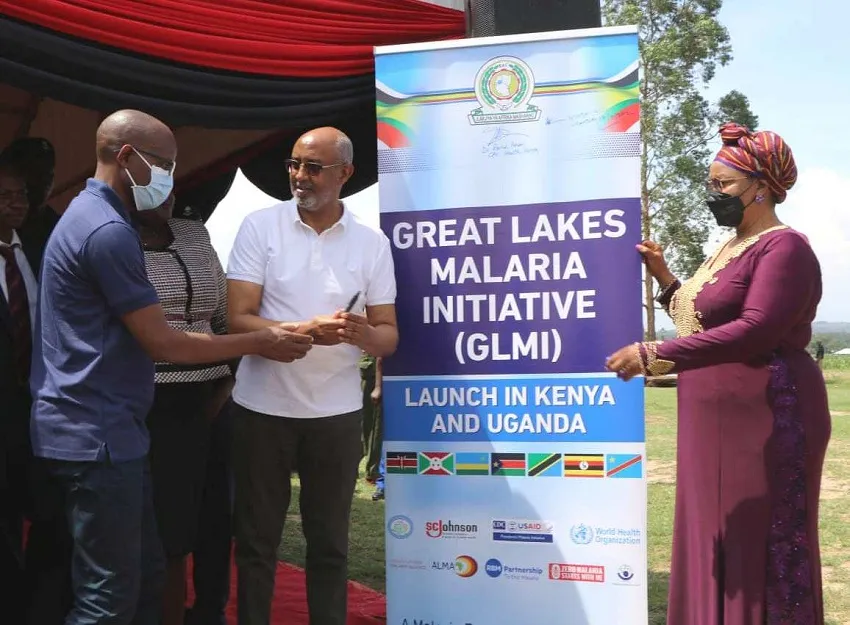Let’s eliminate conflict to improve the lives of children
Thursday, 23 February, 2017

Dr Githinji Gitahi, Group Chief Executive Officer, Amref Health Africa
The Day of the African Child has been celebrated on June 16 every year since 1991, when it was first initiated by the Organisation of African Unity, now the African Union.
This year, 2016, the day will be marked under the theme “Conflict and Crisis in Africa: Protecting all Children’s Rights”.
Africa is the most conflict-prone region in the world today. Various conflicts have cost the continent the lives of millions of children who would have grown up to be productive citizens of the continent.

Conflicts severely disrupt the lives of communities and the functioning of systems established to address socioeconomic gaps as people flee conflict.
Besides diseases and conflict, other situations increase vulnerabilities. Prominent among these are negative social practices like female genital mutilation and child sacrifice that are still prominent in many parts of the continent.
Conflict notwithstanding, sub-Saharan Africa is home to the highest number of child deaths. In 2015, there were three million child deaths on the continent. This is equivalent to five children under five years of age dying every minute. Two-thirds of these deaths can be attributed to preventable causes. Preventable illnesses such as pneumonia, diarrhoea, malaria and HIV are still the leading causes of death in infants and young children.
Despite some countries making notable improvements in child health in recent years, sub-Saharan Africa’s average child mortality rate is still almost 12 times the average of high-income countries. At the time of birth, over 60 per cent of the children are born at home or on the road to seek care. This means that 6 in 10 children are born without a skilled attendant who could intervene in case the mother has excessive bleeding, infection or hypertension, major killers in pregnancy.
Less than 50 per cent of children below 5 years in Africa complete immunization, leaving the unimmunized children at risk of diseases like polio where the continent is seeing a resurgence of the condition.
Nearly 70 per cent of children who live beyond the age of five years start school but quickly drop out because they lack resources to continue or take on socioeconomic responsibilities (child labour). In addition, girls face menstrual health challenges as well as early marriages that keep them out of school. Over the last 50 years, Amref Health Africa has worked to address bottlenecks to improving child health and child survival in Africa.
Targeting a population of over 17 million children in nine African countries, Amref Health Africa has promoted the implementation of life-saving maternal and newborn services including antenatal care, basic emergency obstetric and newborn care, postnatal care, integrated management of childhood illnesses, nutrition, immunisation and early childhood development interventions. We have also promoted water, sanitation and hygiene targeting children in and out of school, complemented by programmes to address menstrual health for girls.
One of our programmes here in Kenya, the Dagoretti Child Protection and Development Centre, seeks to improve the health and living conditions of street children and other vulnerable children by strengthening community-based child protection systems. Over 26,000 children have passed through the centre and been rehabilitated and reunited with their families.
Despite these and other intervention by us and other stakeholders in the health sector, major challenges have continued to plague the progress to achieving lasting gains in child health. Key among these has been inadequate numbers of skilled health workers, poor health infrastructure to host the lifesaving interventions, weaknesses in sub-national leadership for health especially in new and emerging settlements on the continent, lack of vital equipment and regular stockouts due to weak supply and maintenance systems. Over and above these, poverty in African communities affects women and children disproportionately.
The empowerment of communities to establish and maintain their own health is a sustainable approach to reaching lasting health change for children in Africa. With empowered and healthy African people, even conflict and its effects can be largely curtailed.
On this year’s Day of the African Child, Amref Health Africa calls upon African governments to create and maintain a safe and conducive environment for children to grow, develop and mature properly.
This means that armed conflict and violence, which take a heavy toll on children‘s lives in many parts of Africa, should minimised. In Kenya, politicians should tone down on rhetoric that stirs up ethnic animosity especially now when the country is preparing for the 2017 General Election.
Investment in high-impact interventions regarding child health should increase to sustain and improve upon the gains made in the Millennium Development Goals era.
This calls for investment in addressing health system bottlenecks that curtail the quantity and coverage of interventions. Specifically, this investment should target to increase the availability of skilled health workers, essential lifesaving supplies and medicines, infrastructure as well as health technologies.
African countries and communities should also increase their financial contribution to health care, and specifically for children, in order to meet the rising resource gap. This can start right from the village to larger communities and local governments through a framework of social health insurance.







